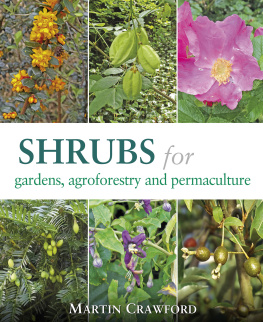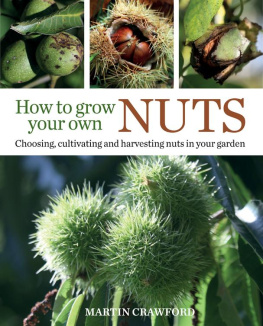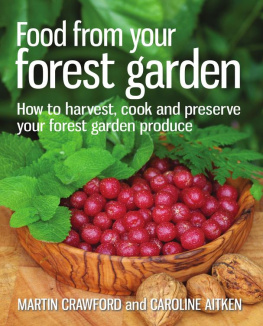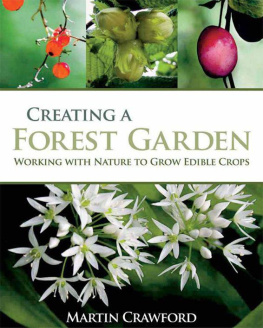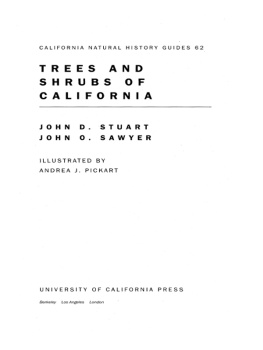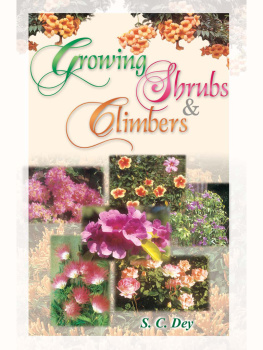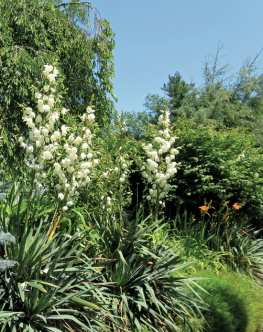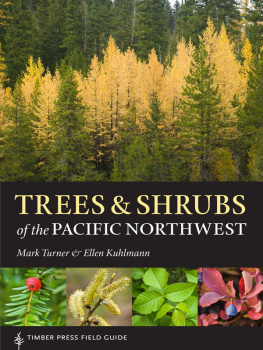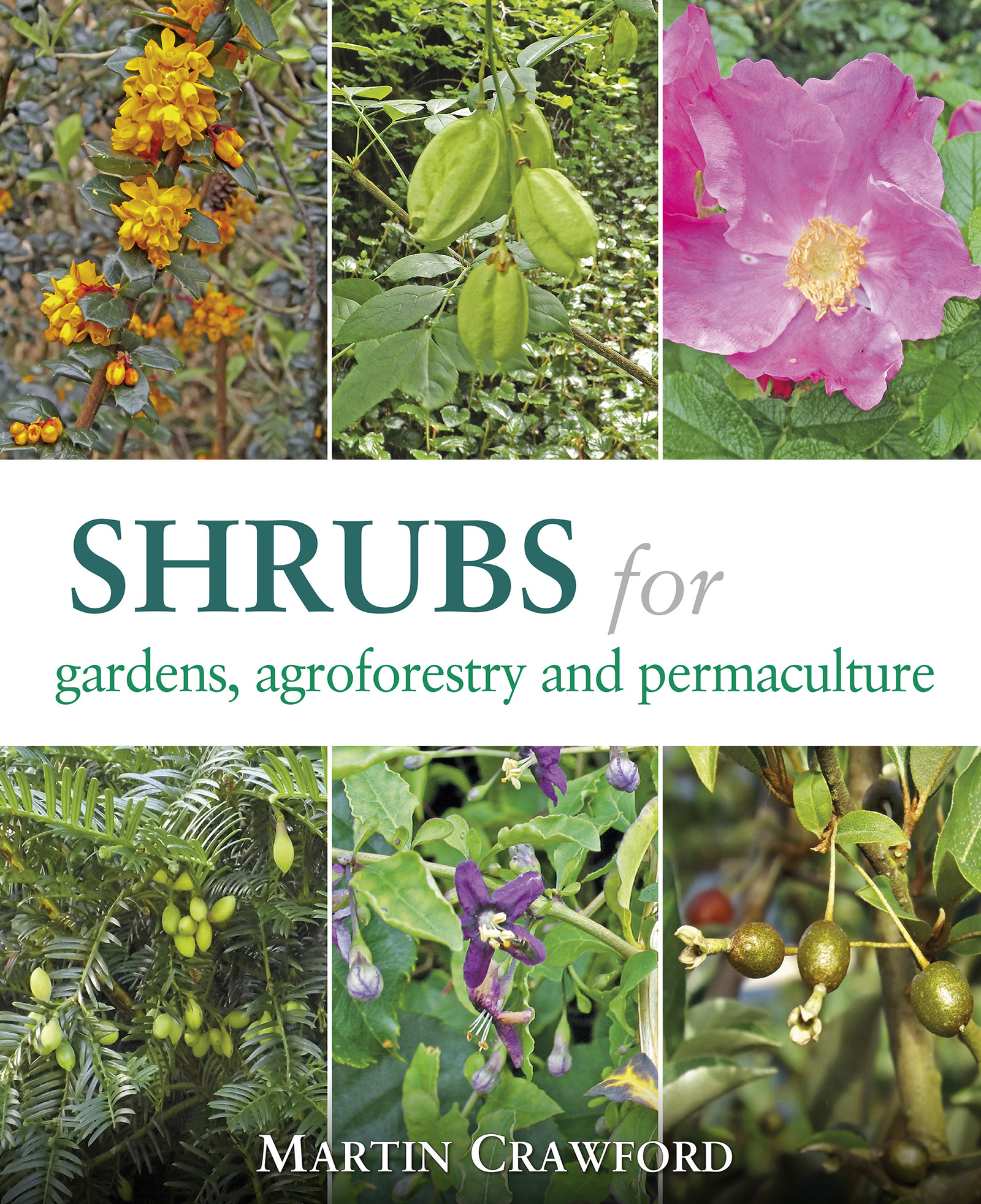The right of Martin Crawford to be identified as the author of this work has been asserted by him in accordance with the Copyrights, Designs and Patents Act 1998
All rights reserved. No part of this publication may be reproduced, stored in a retrieval system, rebound or transmitted in any form or by any means, electronic, mechanical, photocopying, recording or otherwise, without the prior permission of Hyden House Limited.
About the Author
After a brief spell messing about with computers, Martin Crawford has spent the last three decades on the land, starting with organic horticulture but soon becoming entranced by the beauty and potential of trees and perennial plants. He founded the Agroforestry Research Trust in 1991 and has been the director since, setting up one of the best established temperate forest gardens and experimenting with tree, shrub and perennial crops on 8 hectares (20 acres) of land in Devon, UK.
The Agroforestry Research Trust (ART) is a non-profit-making charity that researches into temperate agroforestry and all aspects of plant cropping and uses. Martin runs the nursery at ART which propagates and sells a wide range of perennial plants and trees.
Martin has published multiple journals through ART on fruit and nut trees, useful plants and agroforestry and offers consultancy for orchards, forest gardens and other agroforestry techniques. He is also the author of four bestselling books: Creating a Forest Garden , How to Grow Perennial Vege tables , Food From The Forest Garden and Trees for Gardens, Orchar ds and Permaculture .
Martins new book is an utterly indispensable guide to growing shrubs and small trees, no matter how limited or expansive your space. There are some commonly known edible and otherwise useful trees grapes, currants, raspberries, etc. as well as the best of the less familiar honeyberry, saskatoon, Siberian ginseng among them. The book is full of Martins unique knowledge and experience the best cultivars, how to care for each species, and a wealth of other useful and perfectly laid out information. Martins writing is lively and the design and photography superb. Im one of many who are grateful to Martin for blazing a trail and sharing what he discovers. An essential guide for all tree lovers.
Rob Hopkins , Transition Network cofounder and author of From What Is to What If
Ive been inspired by Martins pioneering work for 20 years, and his new book places much of his wisdom in our hands. Focusing on beautifully diverse shrubs from American allspice to yellowhorn this book shows us how to enrich our patch and be part of a people-driven response to climate change in the process. Beautifully designed, thorough and fascinating, this is an essential for climate-minded gardeners wanting to grow delicious, useful perennials at any scale.
Mark Diacono , experimental gardener, journalist and author of The New Kitchen Garden
Martin has been a leader in choosing and growing plants for our gardens of the future. This ethnobotanical volume on shrubs is as expected, researched with immense detail mirroring his own practical trials. Filled with useful tables that will answer every gardeners questions on soil type, aspect, flowering and fruiting times, frost hardiness, fertility and many more. The section on climatic zones is particularly pertinent as we plan planting schemes for climate change.
Ben Law , woodsman and author of several books, including The Woodland Way
Martin Crawford does it again, with another in his series of useful guides to forest garden plants of all kinds. The book is well organized, the photographs beautiful, the descriptions brief yet informative, with Martins direct experience shining through. The listings of cultivars and their qualities are especially welcome. Covers an array of shrub and vine species for a range of climates and growing conditions, for edible, medicinal, soil improvement and other uses. A worthy reference and a great introduction to a wealth of woody plants!
Dave Jacke , Dynamics Ecological Design and co-author of Edible Forest Gardens volume 1 and 2
You cannot help but admire Martin Crawfords work. His exhaustive research is remarkable. His lists of varieties and comments speak to many hours of detailed study. In this latest work its great to hear a much more personal voice coming through in the opening pages reflecting his concerns about the state of the planet. When he says Nothing we do in terms of land use is an action in isolation, Im with him all the way. This is not a beginners book, but for convinced forest gardeners its a great addition. I learnt lots. Goji berry leaves are edible so it doesnt matter if they dont fruit (which theyll never do in the frozen North)! Great to see RHS hardiness ratings not just USDA more sense for European growers
Graham Bell , creator of the oldest food forest in Britain, permaculture teacher and author of The Permaculture Garden
Crawford sets out his vision of forest gardens being like orchards enriched with shrubs and other productive plants, before urging us to get planting. The introduction includes some very timely and interesting information on carbon sequestration and the final section has highly helpful plant lists. Crawford has clearly done the research to ensure his plant information is relevant to a geographically diverse readership with variable growing conditions. Its pure escapism for plant geeks and an absolute must for the design and plant selection stage of any forest gardening project.
Jo Homan , Edible Landscapes London
A great deal of what I know about forest gardens Ive learnt from Martin Crawford. Each year I take several permaculture design course groups for a tour of his flagship two acre site in Devon and I always learn something new. Im very fortunate, and even with this regular face-to-face contact Im excited to hold another of his books in my hands. Martin is a prolific writer, which is a great gift for us all. Shrubs for Gardens, Agroforestry and Permaculture follows up his excellent reference on trees. Again, most of the book is given over to the plants, providing as much detail as most of us are ever likely to need to propagate and grow them, including in an agroforestry context. Unusual species are found amongst the familiar and, where relevant, cultivars are recommended. This is another fine volume to educate and inspire and the only problem I have now is that I want to grow them all!
Aranya , permaculture teacher and author of Permaculture Design: A Step-by-Step Guide
Martin Crawford has done it again. I have been following Martins work for many years. This book on shrubs fills in the vertical gap alongside his marvellous books on trees and perennial vegetables. Along with his forest garden studies, those that live in temperate climes now have a complete set of texts for developing a forest garden. In point of fact, these may very well be the only manuals that you will need, not only to get started, but to learn the complexities of proper maintenance and management. I cannot say enough about Martins ability to organize an incredibly wide range of plant species and techniques into a working whole that makes sense to the beginner and the experienced gardener or farmer. Thanks Martin for your perseverance through the years to inform, educate, implement and put the word out, tirelessly!

